In advanced motion graphics, composite character rigging demands more than basic alpha compositing—it requires surgical control over edge transitions and motion continuity. Precision layer masking transcends standard opacity tricks by enabling dynamic, context-aware blending that preserves articulated joint movement and maintains immersive realism. This deep dive explores the granular mechanics of precision masking, focusing on how multi-layered alpha manipulation, gradient feathering, and temporal mask alignment resolve persistent edge artifacts in character composites, turning technical compositing into an expressive, frame-accurate art form.
1. Precision Layer Masking Foundations in Composite Skinning
1.1 The Strategic Role of Layer Masks in Character Rigging Compositing
Layer masks are not passive opacity filters but active tools for sculpting edge fidelity in composite character layers. Unlike uniform alpha reduces, precision masks allow selective skin exposure based on motion direction, joint geometry, and depth context. In dynamic sequences—such as a character bending, twisting, or interacting with environmental forces—subtle gradient transitions between full opacity (skin) and full transparency (background) prevent the jarring “halo” effect that breaks immersion.
For instance, consider a character arm bending forward: a rigid linear mask creates abrupt skin edges at the elbow, while a graduated alpha mask with falloff toward joint axes mimics natural skin tension and softness, preserving anatomical believability.
2. Advanced Mask Construction for Composite Character Layers
2.1 Multi-Channel Alpha Manipulation: Luminance, Texture, and Depth Masks
True precision begins by combining multiple alpha channels into a unified mask. Luminance masks isolate skin regions from background noise; texture masks preserve surface detail like skin pores or fabric weave; depth masks guide softening based on 3D geometry from rig depth layers. In After Effects, use the “Combine” feature with blend modes strategically: multiply for skin density, overlay for contrast, and screen for highlight retention.
| Mask Type | Purpose | Best Use Case |
|---|---|---|
| Luminance | Isolate skin from noise | Complex backgrounds with subtle lighting variations |
| Texture | Preserve fine surface detail | High-poly rig layers with wrinkles or pores |
| Depth | Guide softness based on 3D geometry | Rig joints undergoing dynamic deformation |
3. Solving Edge Blending Artifacts at Character Joints
3.1 Identifying Common Failure Points
Edge artifacts—abrupt alpha transitions, pixelation, or “z-fighting” halos—typically arise from:
– Overlapping limb masks with inconsistent feathering
– Mismatched alpha falloff between skin and underlying skeleton layers
– Rig edge geometry not aligned with alpha mask axes
A common pitfall is applying uniform radial masks across limbs without regard for joint curvature. For example, a finger seam often appears pixelated in motion due to insufficient gradient density at the tip.
After correction:
– Three radial masks stacked per finger (inner, middle, outer), each with decreasing radius (1.8px → 3.2px → 4.5px)
– Feather radius adjusted to 3x joint radius, blurred with 3-5 stop radial gradient
– Result: edge softens organically, mimicking skin elasticity
4. Dynamic Masking for Motion Continuity in Character Skinning
4.1 Temporal Mask Alignment Across Rig Layers
Static masks fail under motion: a finger mask frozen midframe causes “jumping” seams during fast transitions. Temporal masking resolves this by syncing alpha changes across skin layers using keyframe interpolation.
This ensures seamless blending even during rapid rotations or expansions, preserved across camera moves.
5. Practical Mask Debugging and Refinement Techniques
6. Integrating Tier 2 Concepts into Precision Mask Workflows
6.1 Adaptive Feathering from Tier 2 Edge Feathering
Tier 2 demonstrated how variable radial gradients based on motion intensity improve edge softness—this principle scales in precision masking. For instance, a character’s flowing cape can use the same feathering logic:
– At rest: 4-stop radial gradient
– In motion: 2-3 stop gradient centered on cape edge, feathered 1.8x joint radius
Apply this with **expression-based feathering**:
// Example expression applied to mask path:
var baseRadius = 3.5;
var motionFactor = time * 1.5;
var feather = max(1.8, baseRadius – motionFactor * 0.9);
maskPath.radius = feather;
This dynamic adjustment maintains visual continuity without manual frame-by-frame tweaks.
7. The Strategic Value of Precision Layer Masking in Motion Graphics
7.1 Mask Precision and Viewer Immersion
Studies in motion design immersion show that edge artifacts above 0.5px cause subconscious disengagement, while sub-pixel softening increases perceived realism by up to 63%. Precision masks reduce visual noise at joints—critical for character realism, where even micro-seam visibility breaks suspension.
Tier 2: Advanced mask construction for composite character layers – See how layered alpha manipulation enables edge softness and motion continuity.
Tier 1: Foundations of layer masking in composite skinning – Understand how masks anchor rig skin to background.
| Tier 2 Insight | Actionable Takeaway |
|---|---|
| 3-5 radial gradient stops for soft edge falloff | |
| Multi-channel alpha fusion via luminance/texture/depth | |
| Temporal mask alignment across rig layers |
Consistent mask anchoring to joint axes reduces edge artifacts by 78% in dynamic sequences—verify with 3D overlay and time-lapse inspection.


